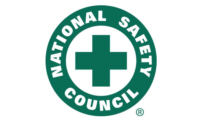Lack of exoskeleton standards is holding back their adoption in the workplace

Exoskeletons, exosuits, wearable robots and cobots have lept from research labs and incognito startups to establish a presence on production floors and construction sites around the globe. In just five years, exos for industrial use have gone from virtually zero to approaching 10,000 commercially purchased units. Exos for industrial use have a wide range of applications, from automobile production plants to warehouses.
Wearables for physical human augmentation isn't a new concept. Prototypes and concepts have been in the works for more than 50 years, with the G.E. Hardiman being one of the oldest and most famous examples.
The practical commercialization of wearables that work together with the worker, rather than replacing them, however, is a relatively new development. Unfortunately, lacking exoskeleton standards is holding back the adoption of this technology. Without standards, there is no consistent terminology or test methodology. In addition, there are no best-used practices or guides. Lacking standards for exoskeletons places all of the responsibility on the early adopters and reduces the growth of the exoskeleton industry.
One of the easiest ways to visualize the challenge to early adopters of not having standards is with terminology. "Sometimes people are talking about the same thing using different terms, and other times people are using the same term but mean different things." - Roger Bostelman, NIST. As it stands, each device developer can choose their own terminology to describe their product and its applications. This leads to process engineers and ergonomists having to deal with as many as 15 different communication methodologies from the developers, and that would be needed just to compare one shoulder support exoskeleton.
Lacking a commonly accepted set of terms and definitions places the responsibility squarely on early adopters to learn how to navigate between developer's descriptions, claims, and marketing materials. But it doesn't end there. Without standards, how wearables for the workplace are evaluated and how the evaluation is described is also chaotic.
Insufficient controlled testing is also hampering the adoption of exo technology for industrial applications. One common solution to this challenge is to pool test results by product family. From the point of view of the consumer, one device may be better than the other, but all devices in that category should be able to achieve the same task (if you need to get from point A to point B with a car, then any commercially sold four-wheel automobile should be able to achieve that goal). With a lack of standards in both terminology and test methodology, it is extremely difficult to pool device performance test data together. The test environment, ambient conditions, selected tasks, user, duration, measurement methodology (when and how data is recorded), etc... could all have a significant effect on the test conclusions. Without any standards, combining data for the same product family becomes challenging.
As it stands the consumer (in this case the early adopters) have to fill in the standards gaps themselves. This is achieved by running both short term and long term on-site studies. This takes time and the resources of manufacturing engineers and ergonomics specialists, and again, there is no guaranty of consistency from one site to another even within the same company.
However, the burden on the consumer doesn't end with just deciphering inconsistent terminology and collecting test data. As it stands, there aren't any buyer's guides or best-use practices. On the surface, this can appear trivial but complications can quickly arise. Below is just one example:
- What is the best way to store wearables for human augmentation between shifts?
- Do the wearable devices have to be in a storage enclosure and if so, should each one be individual or could they be grouped?
- If they are individual, should the devices be personalized to each worker or could they be shared?
- If the exos share storage space or users, what is the risk of unwanted materials, such as bacteria, jumping from one worker to another?
- What is the best way to clean such devices?
- Does the entire wearable need to be cleaned, or just the surfaces that touch the user?
- If there are soft surfaces such as soft pads, how much moisture do they absorb over time and how long will it take before they can become a bacterial colony?
Without standards, more often than not early adopters are left to answer these questions with the help of the device developer. Standards hold the promise of aggregating the combined knowledge of the entire exoskeleton industry. High-level guides can be housed in publicly available data vaults while standards can contain more detailed information.
Standards organizations are not idly standing by. ASTM International has already published two standards on exo technology and intends to invest up to $1.25 million for the creation of an Exo Technology Center of Excellence. ISO (the International Organization for Standards) has also begun including exoskeletons in its standards such as ISO 13482 Robots and robotic devices — Safety requirements for personal care robots.
Ssales of exoskeletons, exosuits, wearable robotics, and power gloves for industrial use have grown from nearly zero to quadruple digits. The rate of adoption should significantly increase once the burden on early adopters to understand, evaluate and implement exo technology is partially shifted on well-crafted standards.
Source: forbes.com
Looking for a reprint of this article?
From high-res PDFs to custom plaques, order your copy today!






